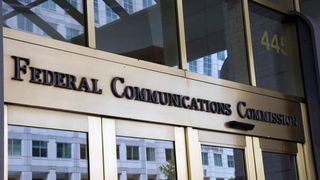FCC Says Temporary Spectrum Authorities Are Paying Off

In a preview of its plan to free up the lower 45 MHz of the 5.9 GHz spectrum band for WiFi, the FCC said the wireless internet service providers (WISPs) it has allowed to use the band temporarily during the pandemic are increasing speeds, reducing congestion and extending coverage areas.
The FCC began extending special temporary authorities for emergency use of the band in late March. To date, it said it has granted more than 100 WISPs to handle the increased demand during the COVID-19 pandemic.
Related: FCC Lends WISPs 5.9 GHz Spectrum for Pandemic-Driven Traffic
The STA's are kind of a dry run on the FCC's grander plan.
The commission voted unanimously Dec. 12, 2019, to share that 5.9 GHz band by dividing it up. The proposal is to free up the lower 45 MHz exclusively for unlicensed use and to keep the the upper 30 MHz for V2V communications, including 20 MHz of that for C-V2X.
But that has not officially happened yet, so the STAs are a preview of things to come.
“American consumers are relying more than ever on broadband, so I’m pleased that 5.9 GHz spectrum is helping fixed wireless broadband providers deliver faster and more efficient service for consumers,” said FCC chair Ajit Pai in a release from the FCC promoting the efficacy of the STAs. “I’m grateful to these companies for making a positive difference in their communities, delivering Internet access that’s sorely needed in some of the hardest-to-connect places in our country.”
Multichannel Newsletter
The smarter way to stay on top of the multichannel video marketplace. Sign up below.
"Americans are depending on WiFi networks to work, learn and stay connected to critical information and the FCC is using all the tools in its toolbox to expand network capacity," said WiFi Forward. "The Chairman, his colleagues and WISPs have taken quick action to connect people when they need it most. We hope these efforts show that the FCC's longer-term compromise approach to the 5.9 GHz band is the right one: take unused spectrum and put it to work for our communities, now."
The compromise was to allow V2V communications exclusive use of the upper 30 MHz--it used to have all 75 MHz--and WiFi the lower 45--rather than have them all try to share all 75 MHz.
"We are grateful, too – to both the FCC who granted the STAs, and our members," said WISPA, the wireless internet service providers association, "including: Amplex, Bolt Internet, Gtek Communications, Intermax Networks, MetaLINK Technologies, Nextlink, Softcom Internet Communications, Southern Broadband, TCC Skywire, Wavelinc Communications, ZIRKEL Wireless, and countless others who are using the 5.9 GHz spectrum to keep Americans connected and safe through the pandemic."
Contributing editor John Eggerton has been an editor and/or writer on media regulation, legislation and policy for over four decades, including covering the FCC, FTC, Congress, the major media trade associations, and the federal courts. In addition to Multichannel News and Broadcasting + Cable, his work has appeared in Radio World, TV Technology, TV Fax, This Week in Consumer Electronics, Variety and the Encyclopedia Britannica.

